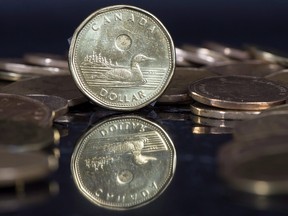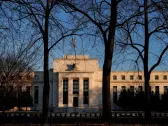Any Trudeau effect on Canadian dollar wears off as reality sets in
As the news of Prime Minister Justin Trudeau’s resignation continues to make headlines, the impact on the Canadian dollar appears to be fading. The loonie, as it is affectionately known, has been under pressure due to various systemic headwinds, including the imposition of Trump tariffs and the expectation of more Bank of Canada rate cuts.
A Brief History of the Loonie’s Performance
On Monday, the Canadian dollar rose 0.79 per cent from its Friday close, briefly breaching the 70-cent-U.S. mark that it had fallen below on December 16, the day Chrystia Freeland announced her resignation as finance minister.
Karl Schamotta’s Insight
According to Karl Schamotta, chief market strategist at Corpay Currency Research, "It may be tempting to ascribe this (the loonie’s rise on Monday) to Prime Minister Justin Trudeau’s decision to step down yesterday," but the reality is that the loonie’s performance on Monday compared with other major currencies suggests otherwise. Gains by the Canadian dollar left it stuck in the middle of a pack of other currencies, including the Mexican peso, the Australian dollar, the pound, and the euro.
Why the Loonie’s Performance Shouldn’t be Attributed to Trudeau
Schamotta thinks that such currencies still face "significant downside risks" and have yet to depreciate "to the extent that would be consistent with tariff loads exceeding 20 per cent." In a fresh note on Tuesday, CIBC Fixed Income Currency and Commodity experts said that a Trump administration will role out tariffs at the slower pace described in the Washington Post article. This still leaves the Canadian dollar exposed.
Rosenberg’s Take on the Economy
In an early morning note on Tuesday, David Rosenberg, founder of Rosenberg Research and Associates Inc., said contracting data released Monday confirmed for him that more interest rate cuts are coming to counteract a slowing economy. The S&P Global Composite Purchasing Managers’ Index for December fell below 50, indicating the sentiment among managers at manufacturing, construction, and services firms is slumping.
The Bank of Canada’s Next Move
Rosenberg said that "serves as a reminder that the (Bank of Canada) has more work to do even as the (Federal Reserve) moves to the sidelines (at least for now)." More rate cuts from the Bank of Canada will result in the Canadian dollar falling further against its American counterpart as investors chase the higher returns from the greenback.
Conclusion
The impact of Justin Trudeau’s resignation on the Canadian dollar appears to be fading. The loonie has been under pressure due to various systemic headwinds, including the imposition of Trump tariffs and the expectation of more Bank of Canada rate cuts. As the economy continues to slow down, the Bank of Canada is likely to cut interest rates further, leading to a decline in the Canadian dollar.
Key Points:
- The loonie rose 0.79 per cent on Monday but still faces significant downside risks.
- Trump tariffs and Bank of Canada rate cuts are systemic headwinds that continue to pressure the Canadian dollar.
- More interest rate cuts from the Bank of Canada will result in a decline in the Canadian dollar.
Recommended Reading:
- What Trudeau’s resignation will mean for Canada’s economy
- A sinking dollar is Trudeau’s latest legacy



